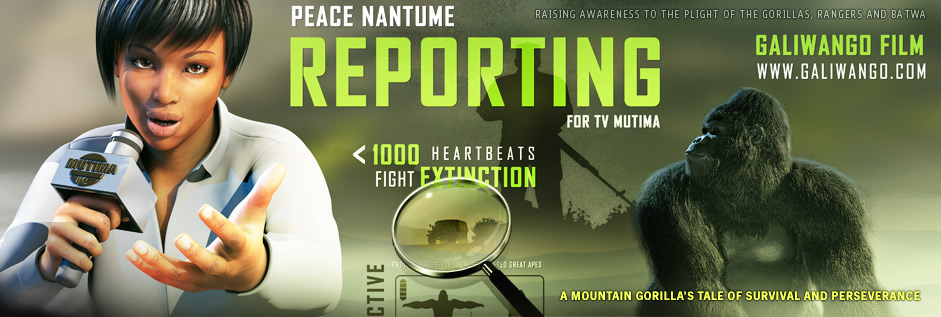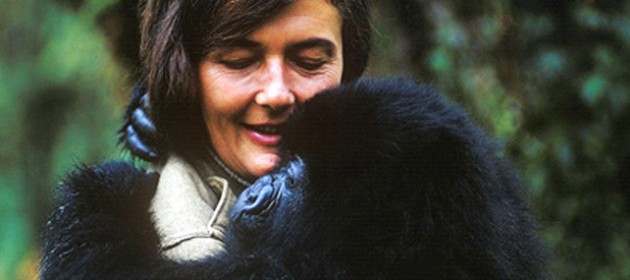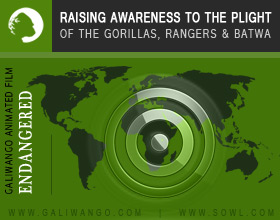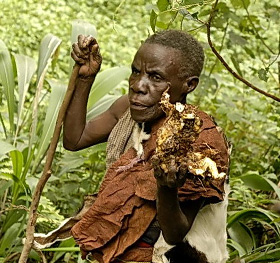

Remembering Dr. Dian Fossey, an Inspiration and Passionate Gorilla Advocate
Dian Fossey was born on January 16, 1932, in San Francisco, California. Trained as an occupational therapist, Fossey became interested in primates during a trip to Africa in 1963. She studied the gorillas of the Rwandan mountain forest for two decades before her unsolved murder occurred in 1985.
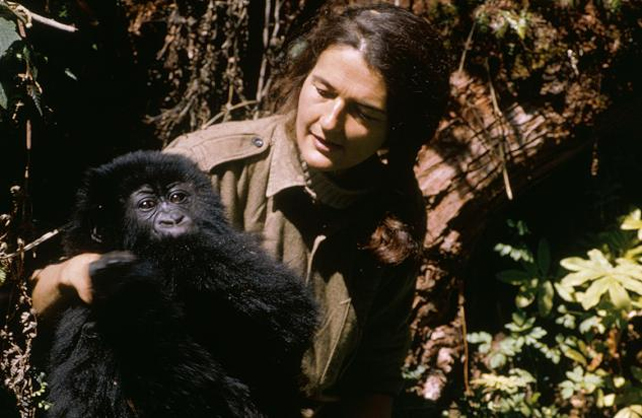
Fossey told her story in the book Gorillas in the Mist, later made into a film starring Sigourney Weaver. Fossey died on December 26, 1985,at Volcanoes National Park in Rwanda.
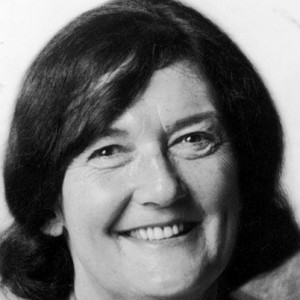
Early Life
Primatologist and naturalist Dian Fossey was born on January 16, 1932, in San Francisco, California. Fossey enriched our understanding of gorillas through her intense study of these animals from the 1960s to 1980s. She was interested in animals from childhood, but changed college courses from pre-veterinary studies to occupational therapy.
Fossey moved to Louisville, Kentucky, to be director of the Kosair Crippled Children’s Hospital occupational therapy department in 1955. But she soon became restless and dreamed of traveling to Africa. On her first trip to Africa in 1963, Fossey met palaeontologists Mary and Louis Leakey, who encouraged her dream to live and work with mountain gorillas.
‘Gorillas in the Mist’
In 1966, Dian Fossey caught up with Louis Leakey at a lecture in Louisville, and he invited her to study the mountain gorillas in Africa. She accepted his offer and lived among the mountain gorillas in the Democratic Republic of Congo until civil war forced her to escape to Rwanda.
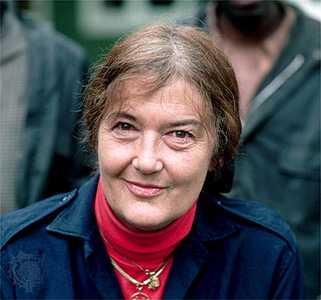 Dian Fossey established the Karisoke Research Foundation in 1967, alternating her time between her fieldwork there and obtaining a Ph.D. based on her research at Cambridge University. She earned her degree in 1976 and later accepted a visiting associate professorship at Cornell University. In 1983, her book, Gorillas in the Mist, was published and became a best seller. A film with the same name was also released in 1988 starring Sigourney Weaver as Fossey.
Dian Fossey established the Karisoke Research Foundation in 1967, alternating her time between her fieldwork there and obtaining a Ph.D. based on her research at Cambridge University. She earned her degree in 1976 and later accepted a visiting associate professorship at Cornell University. In 1983, her book, Gorillas in the Mist, was published and became a best seller. A film with the same name was also released in 1988 starring Sigourney Weaver as Fossey.
Death and Legacy
Considered the world’s leading authority on the physiology and behavior of mountain gorillas, Dian Fossey fought hard to protect these “gentle giants” from environmental and human hazards. She saw these animals as dignified, highly social creatures with individual personalities and strong family relationships. Her active conservationist stand to save these animals from game wardens, zoo poachers, and government officials who wanted to convert gorilla habitats to farmland caused her to fight for the gorillas not only via the media, but also by destroying poachers’ dogs and traps.
On December 26, 1985, Fossey was found hacked to death, presumably by poachers, in her Rwandan forest camp. No assailant has ever been found or prosecuted in her murder.
Her legacy lives on in the Dian Fossey Gorilla Fund International (http://gorillafund.org ) and in the Gorilla Doctors Program: http://gorilladoctors.org/about-mgvp/history.html
Biography Source: http://www.biography.com/people/dian-fossey-9299545
Excerpts from Wikipedia
Opposition to poaching
While poaching had been illegal in the national park of the Virunga Volcanoes in Rwanda since the 1920s, the law was rarely enforced by park conservators, who were often bribed by poachers and paid a salary less than Fossey’s own African staff.[7] On three occasions, Fossey wrote that she witnessed the aftermath of the capture of infant gorillas at the behest of the park conservators for zoos; since gorillas will fight to the death to protect their young, the kidnappings would often result in up to 10 adult gorillas’ deaths.[7] Through the Digit Fund, Fossey financed patrols to destroy poachers’ traps in the Karisoke study area. In four months in 1979, the Fossey patrol consisting of four African staffers destroyed 987 poachers’ traps in the research area’s vicinity.[8] The official Rwandan national park guards, consisting of 24 staffers, did not eradicate any poachers’ traps during the same period.[8] In the eastern portion of the park not patrolled by Fossey, poachers virtually eradicated all the park’s elephants for ivory and killed more than a dozen gorillas.[8]
Dr. Fossey helped in the arrest of several poachers, some of whom served or are serving long prison sentences.
In 1978, Fossey attempted to prevent the export of two young gorillas, Coco and Pucker, from Rwanda to the zoo in Cologne, Germany. During the capture of the infants at the behest of the Cologne Zoo and Rwandan park conservator, 20 adult gorillas had been killed.[10] The infant gorillas were given to Fossey by the park conservator of the Virunga Volcanoes for treatment of injuries suffered during their capture and captivity. With considerable effort, she restored them to some approximation of health. Over Fossey’s objections, the gorillas were shipped to Cologne, where they lived nine years in captivity, both dying in the same month.[7] She viewed the holding of animals in “prison” (zoos) for the entertainment of people as unethical.
While gorillas from fringe groups on the mountains that were not part of Fossey’s study had often been found poached five to ten at a time, and had spurred Fossey to conduct her own anti-poaching patrols, Fossey’s study groups had not been direct victims of poaching until Fossey’s favored gorilla Digit was killed in 1978. Later that year, the silverback of Digit’s Group 4, named for Fossey’s Uncle Bert, was shot in the heart while trying to save his son, Kweli, from being seized by poachers cooperating with the Rwandan park conservator.[12] Kweli’s mother, Macho, was also killed in the raid, but Kweli was not captured due to Uncle Bert’s intervention; however, three-year-old Kweli died slowly and painfully of gangrene, from being brushed by a poacher’s bullet.
According to Fossey’s letters, ORTPN (the Rwandan national park system), the World Wildlife Fund, African Wildlife Foundation, Fauna Preservation Society, the Mountain Gorilla Project and some of her former students tried to wrest control of the Karisoke research center from her for the purpose of tourism, by portraying her as unstable. In her last two years, Fossey claims not to have lost any gorillas to poachers; however, the Mountain Gorilla Project, which was supposed to patrol the Mount Sabyinyo area, tried to cover up gorilla deaths caused by poaching and diseases transmitted through tourists. Nevertheless, these organizations received most of the public donations directed towards gorilla conservation.
The public often believed their money would go to Fossey, who was struggling to finance her anti-poaching and bushmeat hunting patrols, while organizations collecting in her name put it into tourism projects and as she put it “to pay the airfare of so-called conservationists who will never go on anti-poaching patrols in their life.” Fossey described the differing two philosophies as her own “active conservation” or the international conservation groups’ “theoretical conservation.”
Opposition to tourism
Dian Fossey strongly opposed tourism, as gorillas are very susceptible to diseases by humans like the flu for which they have no immunity. Dian Fossey reported several cases in which gorillas died because of diseases spread by tourists. She also viewed tourism as an interference into their natural wild behaviour. Fossey also criticised tourist programs, often paid for by international conservation organisations, for interfering with both her research and the peace of the mountain gorillas’ habitat.
FB Comments
Share This Article
Leave a Reply
© 2009. All Rights Reserved. Galiwango Film, Created, Written, Directed and Animated by Solomon W. Jagwe | www.sowl.com
